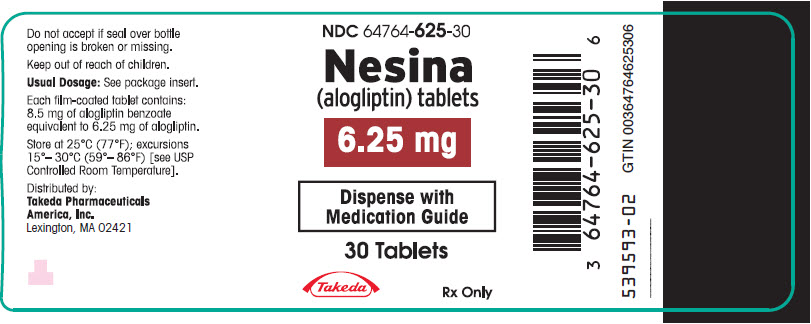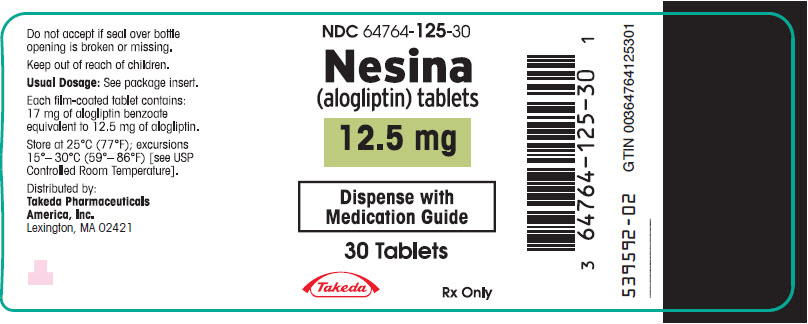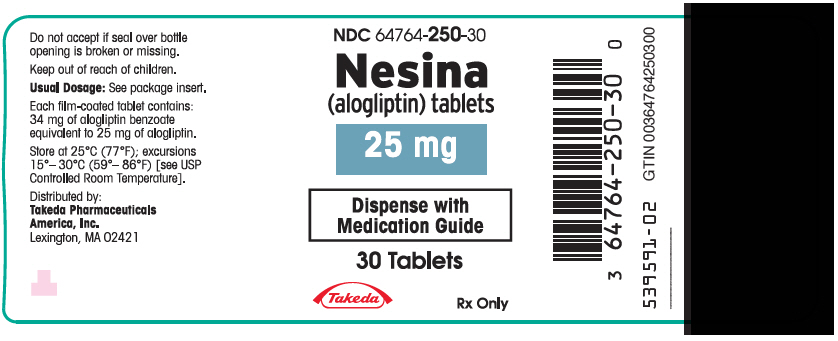
Nesina | Alogliptin Tablet while Breastfeeding
What is Nesina | Alogliptin Tablet used for?
I am breastfeeding mother and I am using Nesina | Alogliptin Tablet. Can it have any bad effect on my kid? Shall I search for better alternative?

Nesina | Alogliptin Tablet Breastfeeding Analsys
Alogliptin while Breastfeeding
Low RiskCAS Number: 850649-61-5

It promotes pancreatic insulin secretion by inhibiting the DPP-4 enzyme that degrades the GLP-1 and GIP intestinal hormones involved in the physiological regulation of glucose, which are activated by eating (EMA 2016, Baetta 2011, Scheen 2011). Administered orally, once a day. Common side effects are upper respiratory tract infections, urinary tract infections, gastrointestinal disorders, rash and headaches (EMA, 2016). Low risk of hypoglycemia in monotherapy (EMA, 2015, Scheen 2011). Doses up to 16 times higher than normal for 2 weeks did not produce side effects (EMA, 2015). Since the last update we have not found published data on its excretion in breast milk. Its pharmacokinetic data (EMA 2015, Scheen 2011): low molecular weight, low percentage of binding to plasma proteins and very long half-life) make it likely it will pass into breast milk in concentrations that could be significant. Until there is more published data on this drug in relation to breastfeeding, safer known alternatives may be preferable, especially during the neonatal period and in case of prematurity. Diet, exercise, and breastfeeding improve blood sugar levels. Among the antidiabetics of this same group, saxagliptin and vildagliptin would be preferable due to their short half-life (less than 3 hours). See below the information of these related products:
Nesina | Alogliptin Tablet Breastfeeding Analsys - 2
Alogliptin while Breastfeeding
CAS Number: 850649-61-5
No information is available on the clinical use of alogliptin during breastfeeding. If alogliptin is required by the mother, it is not a reason to discontinue breastfeeding. However, an alternate drug may be preferred, especially while nursing a newborn or preterm infant. Saxagliptin has a shorter half-life than the other dipeptidyl-peptidase IV inhibitors and linagliptin is highly protein bound, so these might be better choices among drugs in this class for nursing mothers. Monitoring of the breastfed infant's blood glucose is advisable during maternal therapy with alogliptin.[1]

What should I do if I am breastfeeding mother and I am already exposed to Nesina | Alogliptin Tablet?
Nesina | Alogliptin Tablet is in the category of low risk, if you have already used it then its not a big deal if health and behavior of baby is good. However your health care provider shall be aware of the fact that you have used Nesina | Alogliptin Tablet so you should inform him based on your convenience.
I am nursing mother and my doctor has suggested me to use Nesina | Alogliptin Tablet, is it safe?
Nesina | Alogliptin Tablet comes in category of low risk and if your doctor is aware that you are breastfeeding it should be ok to use
If I am using Nesina | Alogliptin Tablet, will my baby need extra monitoring?
Not much monitoring required while using Nesina | Alogliptin Tablet
Who can I talk to if I have questions about usage of Nesina | Alogliptin Tablet in breastfeeding?
US
National Womens Health and Breastfeeding Helpline: 800-994-9662 (TDD 888-220-5446) 9 a.m. and 6 p.m. ET, Monday through Friday
UK
National Breastfeeding Helpline: 0300-100-0212 9.30am to 9.30pm, daily
Association of Breastfeeding Mothers: 0300-330-5453
La Leche League: 0345-120-2918
The Breastfeeding Network supporter line in Bengali and Sylheti: 0300-456-2421
National Childbirth Trust (NCT): 0300-330-0700
Australia
National Breastfeeding Helpline: 1800-686-268 24 hours a day, 7 days a week
Canada
Telehealth Ontario for breastfeeding: 1-866-797-0000 24 hours a day, 7 days a week
